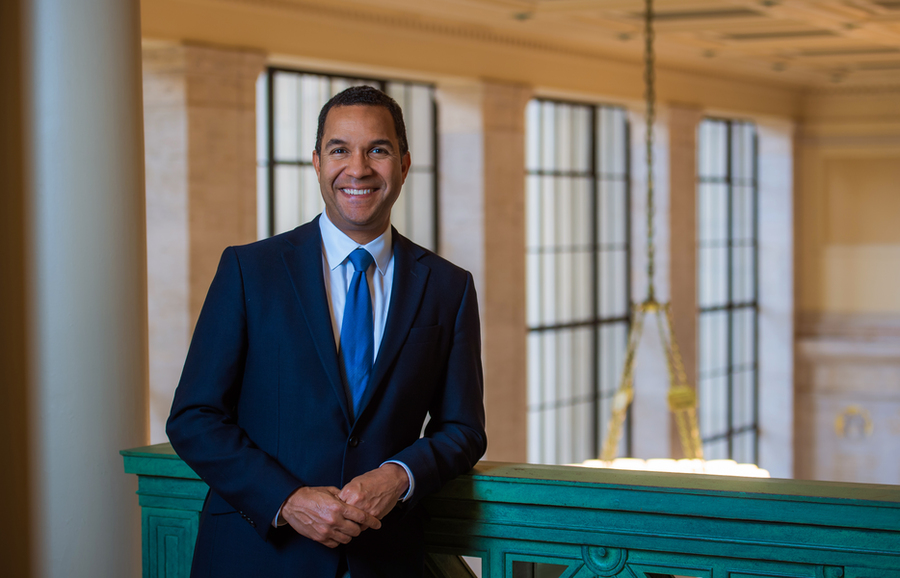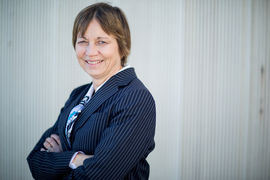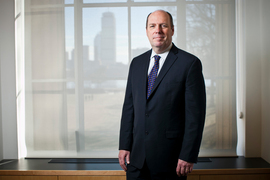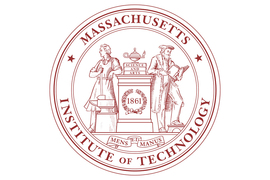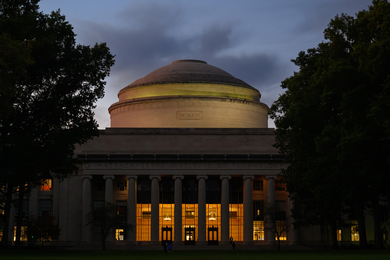The first draft of MIT’s Strategic Action Plan for Diversity, Equity and Inclusion was released in the spring of 2021. After an extended comment period that has included dozens of focus groups, community engagement sessions, and presentations to the campus and alumni communities, as well as email and inputs from all corners of MIT, the plan is now being updated.
In a conversation prepared for MIT News, Institute Community and Equity Officer John Dozier reflects on what he has learned about MIT since he assumed his role in March 2020, the current state of the plan, and his hopes for its implementation.
Q: Tell us about the process of creating MIT’s Strategic Action Plan.
A: In my experience, good plans emerge from processes that are geared toward consensus building amongst key stakeholders. A good plan will give us not only a roadmap for our efforts over the next five years, it will also help us to think more collaboratively about how we can eliminate the sometimes-large disparities in experiences between members of our community. It will allow us to evaluate how well we’re doing by assessing what is working and what isn’t, so that we can divest ourselves of things that aren’t effective and put our time, energy, and resources into things that are. In short, given that inclusion is essential to excellence, a good plan will help us take meaningful steps toward an MIT that truly welcomes, respects, and brings out the best in everyone.
Getting started, we wanted to draw on existing institutional knowledge. So, we tapped a group of faculty, staff, students, and postdocs who know MIT well to serve as a steering committee. We went through multiple earlier reports that identified patterns of inequity at MIT, mapped out an initial list of more than 170 possible ideas to move the community forward, and talked broadly about what we wanted the plan to achieve. All of this came together as a first draft, which was then reviewed with senior leadership and subsequently released to the MIT community.
The first round wasn’t a complete draft of what most people (ourselves included) would call a strategic plan. For example, it didn’t articulate goals or say anything about resources. Our aim with the first draft was to gain an understanding of whether we were pointed in the right direction before determining goals, who would be accountable, and the resources needed to support the plan. Yet, much of the feedback we received reflected frustration with that lack of clarity. In addition, our process led to several members of the steering team feeling that the revisions posed by senior leadership occurred without their engagement and ultimately weakened the draft.
Starting in the summer, we took a step back, slowed down, and refocused on building agreements. We centered our efforts on developing shared interest statements related to each part of the plan. With agreement on our shared interests, or “the what,” we could move to advance consensus about the actions that we will take, or “the how.”
Q: How would you describe the challenges you have encountered in this process?
A: The two words I heard most frequently when I started at MIT were “decentralization” and “trust” — as in, the gulfs of trust that exist between different segments of our community. As we embarked on the strategic planning process, which requires trust and ideally leads to more systematic and coordinated efforts, we were really challenged by these realities.
Another challenge that has emerged, especially over the last several months, is the sheer volume of related efforts around the Institute. For example, the Values Statement Committee was charged with articulating the principles that tie our community together, and the members of Task Force 2021 and Beyond were asked to make a plan for MIT’s post-pandemic future. Each of these efforts — along with others — overlap with this plan, but each overlap is different. If we can leverage all of the expertise driving these efforts, it will dramatically increase our chances for success, and I think it will make more sense to people.
Additionally, MIT has already done a lot of really important work around creating a more inclusive and healthy community. But that work hasn’t been particularly well coordinated. We need to identify how to merge the past into the present as we look toward the future. Having people think of this plan as their last, best, maybe only chance to get their concerns addressed by the Institute makes it much more difficult to be strategic.
Also, we’ve done the vast majority of our strategic plan development without the benefit of being physically present with one another. From a personal perspective, learning about the culture of MIT and getting to know members of this community has been tremendously exciting — but it has also been a serious challenge, because I started in this role the very day that the campus was closed as a response to the pandemic. Developing new relationships while leading an effort to redefine organizational effectiveness through a people-first lens without actually meeting people has been daunting. There is something to be said for being in the same place at the same time.
And lastly — though it’s more of an opportunity than a challenge — MIT has made some major additions to our expertise and capacity since we started work on the plan. The new assistant deans for diversity in each of the schools and the college, plus other new staff in academic departments and other units will provide new levels of leadership and support for school- and department-based efforts. We need their help to address both our broader challenges and our more local ones, but they continue to need time for onboarding and orientation in order to be truly effective.
Q: What have you learned while creating this plan?
A: In short, I have learned a lot. We started with a focus on maximizing efficiency. Over the last couple decades, MIT leadership has received many reports that focus on the challenges experienced by members of our community who are underrepresented and the changes needed to better support them. We were intentional about engaging the data from these reports. A significant number of people within the MIT community took the time to respond to surveys, attend focus groups, and provide input that contributed to these reports. Our assumption was that the reports represented a kind of consensus position from which we could start.
In hindsight, I understand that even while our senior leadership team, students, staff, postdocs, and faculty value and were engaged with the information from past reports, they need their own opportunity to influence what MIT is committing to and how that work will be done. Additionally, they want to understand how existing and additional resources will be organized and allocated, the details of the plan’s intended impact over time, how the plan will connect with values such as free expression, and how we will hold ourselves accountable.
Addressing all of these needs requires a process that is different from the efficiency-based process that we adopted at the beginning, and it has required more time. There are certainly things that I would do differently based on what I know now. However, I think it’s important that we are learning, growing, and pivoting to make this a meaningful process that advances the Institute’s mission and creates an environment that addresses community needs and reflects a deep commitment to being more inclusive.
Q: How does free expression connect with the strategic action plan?
A: It connects directly. I’ve heard from members of our community that they see a tension between how we value free expression and our commitment to ensuring that everyone at MIT feels valued and supported. I don’t think of these values as being in tension with one another. Rather, I see them as being interdependent.
We cannot create and sustain a community where people — from the whole range of backgrounds and viewpoints — truly feel a sense of belonging unless we commit to their right to constructively share their ideas, thoughts and considerations. Similarly, we cannot have a community that values free expression without an equal commitment to creating and sustaining a sense of belonging where everyone feels their identity and contributions are respected and valued. Free expression is vital for our community to function in a healthy way — but by the same token, free expression cannot mean a free pass to be intentionally demeaning or harmful.
Civil discourse, critical thinking, and empathy are at the core of how we create and sustain a strong sense of community at MIT. These are the skills that are needed to make connections between our values for free expression and belonging.
Q: What do you think will be the most important outcome of the plan?
A: I always start with hope — I have hope and confidence in our community’s ability to realize MIT’s mission in ever more powerful ways. There is a remarkable energy and desire to create a better, more inclusive community at the Institute. In my mind, when there’s a lot of energy around doing something so meaningful and you can combine that energy with a lot of really smart people, how can you not be hopeful?
I also believe that a plan that results in more positive experiences for those who have been marginalized in our community will fuel the creativity, breadth, and volume of our research, teaching, and learning while enhancing our overall effectiveness. Without this effort, we hinder our ability to fully achieve the Institute’s mission. With it, we cultivate our community’s capacity for trust, for expansive thinking, and for appreciating the deep human impact of everything we do.
Ultimately, the priorities, commitments, and actions that emerge from this process will be informed by the lessons passed down to us from the past, by our lived experiences in the present, and by our shared commitment to what’s possible when we embrace inclusion as an essential element of excellence. All of us will be responsible for making that commitment real, in all of our actions, throughout our time at MIT.
